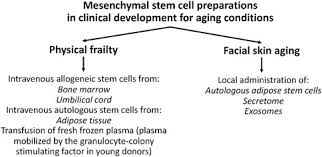Cord blood stem cells, often overlooked, are the hidden treasures within a newborn’s umbilical cord. In this article, we will delve into the remarkable world of cord blood stem cells, their significance, and their potential to transform the field of medicine.
The Unsung Heroes: Cord Blood Stem Cells
Cord blood stem cells are hematopoietic stem cells found in the umbilical cord and placenta. They possess the unique ability to differentiate into various types of blood and immune system cells, making them indispensable for medical treatments.
Unlocking Their Potential
These stem cells have the remarkable potential to treat a wide range of diseases, including leukemia, lymphoma, and certain genetic disorders. Their versatility in forming red blood cells, white blood cells, and platelets can be life-saving for patients in need.
Cord Blood Banking
The preservation of cord blood is an intricate process that involves collecting the blood from the umbilical cord and placenta after a baby’s birth. This blood is then processed, tested, and cryopreserved, ensuring that the stem cells remain viable and potent for future medical use.
The Gift of Life
Cord blood stem cell transplants have revolutionized the world of medicine. These transplants are a beacon of hope for individuals battling blood cancers and immune system disorders, offering a chance at recovery and renewed health.
Regenerative Medicine
The field of regenerative medicine holds great promise, and cord blood stem cells are at its forefront. Researchers are exploring how these stem cells can be used to repair damaged tissues and organs, opening new avenues for treating conditions that were once considered incurable.
Personalized Medicine
Cord blood stem cells offer a unique advantage in personalized medicine. They can be stored for a lifetime, providing a source of genetically matched stem cells for potential treatments tailored to an individual’s specific needs.
Ethical Considerations
As the potential of cord blood stem cells becomes more apparent, ethical questions arise. Issues related to the ownership, accessibility, and commercialization of cord blood stem cells require thoughtful regulation to ensure their ethical and responsible use.
Conclusion: A New Frontier
Cord blood stem cells are truly treasures within the umbilical cord. Their immense potential to save lives and transform healthcare is a source of hope and inspiration. As science and research continue to advance, we can look forward to a future where cord blood stem cells play a pivotal role in healing and improving the quality of life for many.
FAQs
1. What are cord blood stem cells?
Cord blood stem cells are hematopoietic stem cells found in the umbilical cord and placenta. They can develop into various types of blood and immune system cells.
2. How are cord blood stem cells collected and preserved?
Cord blood is collected after a baby’s birth, processed, tested, and cryopreserved to maintain the viability and potency of the stem cells.
3. What is regenerative medicine, and how do cord blood stem cells fit into it?
Regenerative medicine focuses on repairing or replacing damaged tissues and organs. Cord blood stem cells are being explored for their regenerative potential in various medical treatments.
4. Can cord blood stem cells be used in personalized medicine?
Yes, cord blood stem cells can be stored for a person’s lifetime, offering a source of genetically matched stem cells for personalized medical treatments.
5. Are there any ethical concerns related to cord blood stem cells?
Ethical considerations regarding cord blood stem cells include issues of ownership, accessibility, and commercialization, which should be addressed through responsible regulation.
